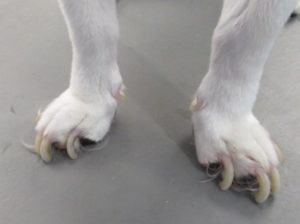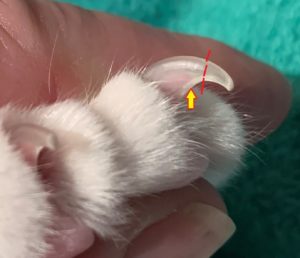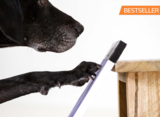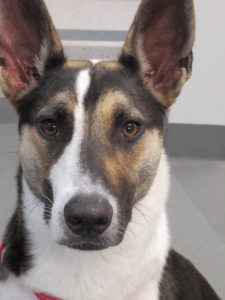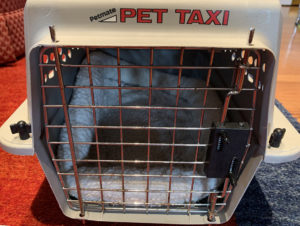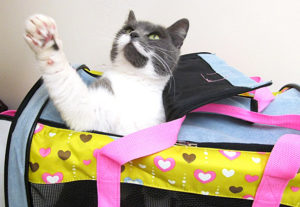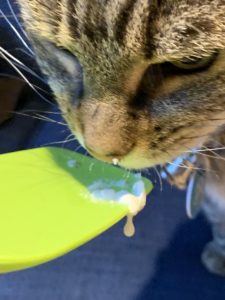
During the pandemic, there has been an upsurge in people becoming pet owners. That is fantastic and we completely understand your desire to share your life and home with a furry friend. The best relationships are built on trust. Helping your pet learn to accept, and even enjoy, the care you need to provide and to be comfortable with the care they need during a veterinary visit will be time well spent.
This month the doctors and staff of Hawthorne Hills Veterinary Hospital want to share some valuable tips for pet owners that every veterinarian wishes you knew. Our veterinarians and most all of our team are all Fear Free Certified Professionals. We have pledged to look out for our patient’s emotional well-being in addition to focusing on their physical health.
Our emphasis today is on several areas that present the biggest challenges for many pets and pet owners – pedicures, muzzle training and physical exams at the veterinary office. We need you to be involved. Spending the time teaching your pet how to accept the care and handling they need is essential for their well-being, and it needs to start at home.
Pedicures
Nail trimming can be a very stressful chore for you and your dog. It doesn’t have to be this way! Overgrown nails are a risk of being broken and causing your pet pain. Nails can even grow into paw pads. It is important that your pet allows routine nail care.
Here are great resources that discuss how to help your pet enjoy their nail trims!
- Fear Free Pets – Trimming Away the Terror
- VIDEO: Dr. Sophia Yin – counterconditioning nail trims
- Teach Shake a Paw for Nail Trims
- Teaching Your Dog to Lie on Their Side for Nail Trims
- Stationing Your Dog for Nail Trims
- How to Teach Your Dog to Use a Nail Board for Rear Nails
One of the newest techniques is to train your dog to maintain its own nails. Scratch pads are giant emery boards for your dog. The link below is for a great product and has excellent training videos.
Muzzle Training
Every dog should be trained to wear a muzzle. There is such a sigma about dogs needing muzzles, but they are an invaluable tool that are used by pet professionals. You never know when your dog may need to wear a muzzle and if they are already familiar with a muzzle, it will be much less stressful and a much more enjoyable experience.
Why would a dog need to be muzzled? 
- Treat delivery system. Smearing cheese or peanut butter on the inside of the muzzle prior to putting it on gives a yummy treat. This allows time to trim nails and grooming while your pet is enjoying a great snack.
- Dogs cannot communicate their pain with words. Muzzles keep everyone safe while we help your pet.
- Muzzling an anxious dog allows less restraint and handling while keeping everyone safe.
- Dogs eat rocks, socks or other inedible items. Basket muzzles prevent ingestion of foreign objects. This may prevent a potential intestinal obstruction that requires emergency surgery.
- Allows your dog to interact with other dogs safely in public places.
- Keeping young children safe when around an anxious dog
The Muzzle Up Project is a wonderful resource. Dogs can be quickly trained to tolerate and enjoy having a muzzle on. https://muzzleupproject.com/
Accepting Physical Restraint and Exams
As much as we love to hug and cuddle our dogs; our dogs don’t really enjoy our hugs but rather learn to tolerate them.
In order for your pet to live a long and happy life they will need regular veterinary care. One of the main ways veterinarians ensure your pet is healthy is a physical exam. This requires your dog and cat to hold still. Many dogs do not want to hold still and even more do not want a stranger poking and prodding them. Cats often want to hide and pretend they aren’t here. As a consequence, the attention we need to provide can cause anxiety in even the most out-going dog or friendly cat.
Believe it or not you can train your dog and cat to tolerate exams and even offer up body parts (like paws/legs) to be examined. Zoos practice these techniques every day to facilitate drawing blood from a gorilla, doing an ultrasound check for pregnancy on a rhino or providing foot care for an elephant. If they can do it, so can you!
When your pet is comfortable and cooperative it makes our visits so much more enjoyable and makes it easier to provide the care your pet needs.
Fear Free Pets have great articles that discuss how to go about this process.
- Fear Free Pets – Getting Ready for a Physical Exam
- Fear Free Pets – Preparing Cats for Exams
- Fear Free Pets – Training for a Blood Draw
- Fear Free Pets – Preparing Your Pup for an Oral Exam
- Dr. Sophia Yin – Training Dogs & Cats to Have Their Ears Handled
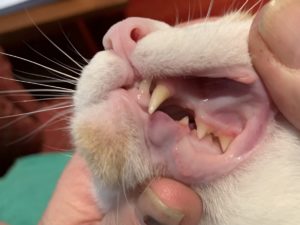
Cats can cooperate to let you see their teeth too
Leashes, Harnesses and Crate/Carrier Training
Safety is an essential aspect of having a pet in your life. Teaching your dog and cat to walk on leash or harness and to be comfortable in a crate or carrier means they can spend time with you and your family wherever you go. Keeping them safe when you are out for a walk or a hike, safe when traveling with you on vacation or when you move, safe around kids, strangers and other animals, and safe when they need care from the groomer, a boarding facility, or a veterinarian will make both of your lives less stressful.
For cats, the best carrier styles provide safety and easy access. The exact type can vary based on what your cat likes best, however, a carrier that provides access from the top is appreciated by your veterinary team. We can sometimes provide a portion care while leaving your kitty in their carrier, yet easily remove them when needed. No more pulling a cat out, turning the carrier upside down or having to completely disassemble a carrier. That is scary for cats and they deserve better.
- Fear Free Pets – Teach Your Cat to Go in a Carrier
- Cat Friendly – Cat Carriers
- Fear Free – Choosing a Collar, Leash or Harness
Adventure Cats: https://www.adventurecats.org/
Ruffwear Gear for your dog: https://ruffwear.com/
We’ve compiled a list of general procedures we hope you will practice with your dog and cat. on a regular basis.
You might not be being all of these things at home, yet your pet’s practice at home will make their visit to the veterinarian a lot more pleasurable.
Training to Accept Restraint and Physical Exams
- Holding still while examining the eyes & ears
- Listening to the heart and lungs
- Evaluating teeth
- Palpating their tummy and checking their joints
- Allowing feet to be examined
- Holding still for a blood draw
- Relaxing on their side and holding still for a radiograph or ECG
- Having their temperature taken – although the newest microchips from HomeAgain (which we use) are able to read a pet’s body temperature when the microchip is scanned. Your pet thanks you!
Spa Care for The Body
- Brushing teeth
- Maintaining a healthy hair coat – combing, brushing and trimming
- Cleaning ears
- Providing Pedicures
Safety on Leash, Traveling or in an Emergency
- Leash and/or Harness training
- Carrier training for your cat
- Crate training for your dog
- Muzzle training
All pets should learn to be comfortable with a physical exam – whether at home, at the groomer or at the veterinary hospital. If you can’t easily touch your pet, it makes it difficult to know about changes and it makes it especially hard for your veterinary team to provide care when your pet is painful or sick. Spending this time with your pet increases their bond with you and it also helps you stay in touch with them. Knowing about their ‘normal’ helps you recognize changes in their health and behavior at an early stage and that helps us address their needs before health issues are advanced.
Every dog and cat benefits from having their hair coat managed, especially if they have longer fur. This means paying attention to the presence of mats, dander, dirt and any changes such as lumps, bumps, rashes, wounds or parasites.
Teaching your pet to enjoy your attention will make it much easier for a lifetime, and providing regular (daily to weekly) care ensures their comfort. As part of regular grooming, you can inspect their ears for excess wax, provide a relaxing massage while you are checking their body for any changes, as well as inspect their teeth and nails.
Think of developing these skills as learning to play an instrument or get good at a sport. You might understand the goal, but it still takes time and lots of practice to master the techniques, the timing and to work through the set-backs when things don’t go as you expected.
Our pets are no different. It will take learning on your part and also by your pet. When we are starting out, our pets don’t know what we have in mind, so we need to teach them. Approach each skill in a step-wise fashion, go slowly, and be gentle. If we combine the attention with a tasty treat or a reward that our pet enjoys, it will usually lead to better success. It isn’t always easy so don’t be in a rush. It will take time for each pet to understand what we want, and for them to learn how to cooperate. Don’t give up, get creative and keep practicing.

